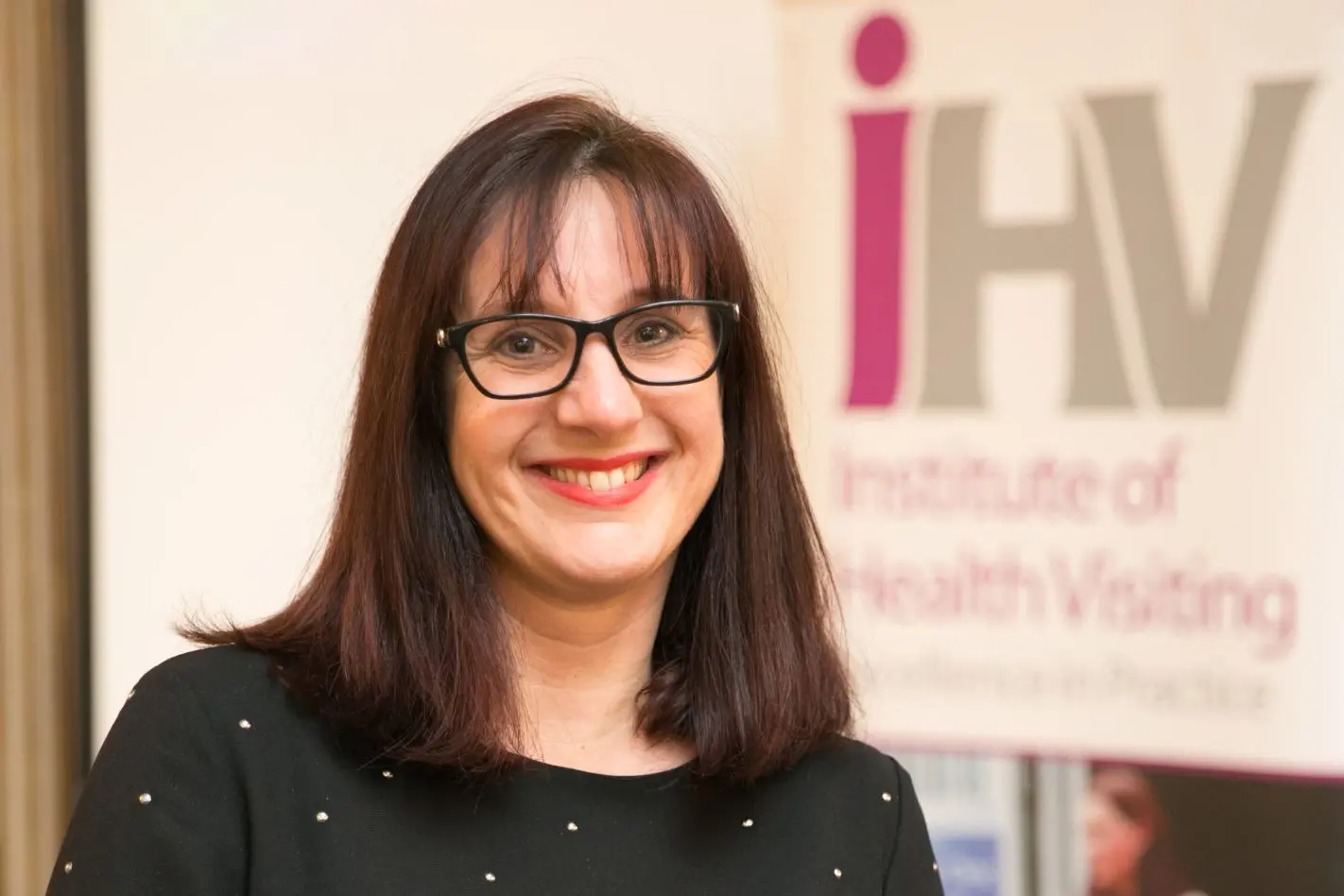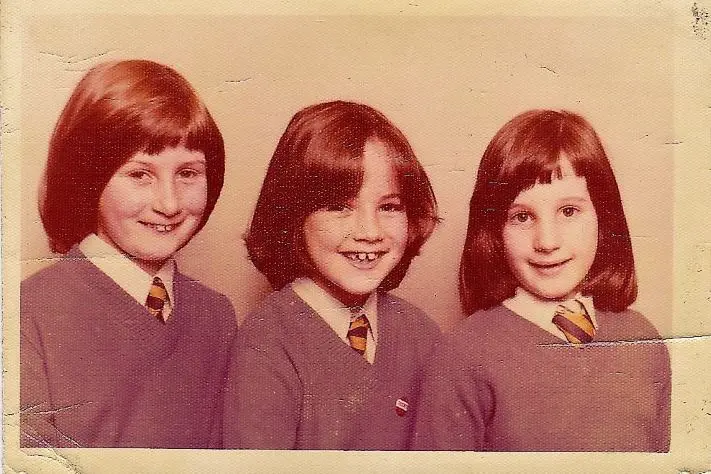8th August 2018
A blog by iHV’s Philippa Bishop on her work with the Children’s Oral Health Improvement Programme Board in England.

Philippa Bishop, Training Programme Manager, iHV
Here, at the Institute of Health Visiting, I hold the position of Training Programme Manager which involves overseeing our hosted, commissioned and grant-funded training programmes. Although a busy role I, like each of my colleagues at the Institute, additionally represent the Institute and the health visiting profession on boards and at a number of national level meetings – ensuring that the voice of the health visitor is heard and that any opportunity to influence policies that affect health is not missed.
One of my current extra responsibilities is representation of the iHV on the Children’s Oral Health Improvement Programme Board in England (#COHIPB). This has led to other opportunities and introductions, including speaking at the RCPCH Insights conference “Why Children’s Oral Health is Everybody’s Business” on the role of the health visitor for children’s oral health, and attending a recent engagement event at the University of Birmingham addressing the area of child dental neglect. Dr Cheryll Adams, iHV Executive Director, first delegated attendance at the COHIPB meetings to me about a year ago and I had no reservations about stepping up to the plate.
My own background is that I am the youngest daughter of two (now retired) NHS dentists – so my own childhood was dentally privileged in that a good diet, brushing teeth twice a day and access to dental care were a given. I grew up in a home in the 1970s where piles of the British Dental Journal propped doors open, plaster models of patients’ mouths with new dentures, crowns and bridges sat next to the kettle, and discussions about latest dental treatments formed tea-time chatter.

Philippa Bishop as a young girl with her two elder sisters
Once a week my father undertook dental extraction lists under general anaesthetic (GA) in his surgery, with the local GP performing general anaesthesia and 8 out of 10 patients on each list were regularly children. By the 1980s, the practice of surgery GAs was losing favour due to safety concerns, whilst at the same time the demand for it was declining as improvement in younger patients’ oral health was being witnessed following the introduction of fluoride in toothpaste. I remember TV adverts from that era – either Crest or Colgate – with a child emerging from the dentist’s surgery having his hair ruffled and being praised for not needing a filling. When my dad retired twenty years later, he was still convinced that dental caries in children could be all but eradicated through fluoride toothpaste.
We now know that good oral health and freedom from tooth decay is far more complicated than brushing with fluoride alone and no longer the responsibility of just the dentist. Almost a quarter of five-year olds have dental decay with between 3 and 4 teeth affected, with children from lower income households having a more severe caries experience and an unacceptably high inequalities gap (PHE, 2018).
During the two decades that I practised as a clinical health visitor, I regularly came across families who lived without a single toothbrush in the household – generations of the same family existed with thick plaque coating their teeth and the chronic pain of dental caries and dental loss as a common and accepted experience. I escalated incidents of dental neglect that clearly interfered with the child’s development and school readiness. For example, take child “K”, who lived with his young 20-year old mother and 2 younger siblings. At the age of 4-years old, K had missed 50% of his early years education and had marked “bottle caries” and decay visible on his upper and lower incisors. K had no interest in eating, slept poorly and his weight was falling across the centile chart. He missed appointment after appointment at the Community Dental Clinic as his mother struggled to prioritise attendance over and above the day to day overwhelming demands of getting by. A long period of partnership working with Homestart parent volunteers and the community dentist saw K reviewed and admitted for dental extraction of 6 teeth, followed by an episode of collaborative working alongside the family with the oral health promotion team to provide cups to replace bottles and introduce jointly-agreed goals for good oral health habits and embed them. K’s dental decay was intricately linked to deprivation and social disadvantage, and was one of a raft of unmet health needs within his family that categorised him as a “Child in Need” under Section 17 of the Children Act 1989. It is now widely recognised that poor oral health is a sentinel marker for wider health and social care issues (PHE, 2016).
So, my personal background and professional experience instil in me the absolute passion for good oral health for all children, along with the recognition of the challenge of achieving that ambition. The COHIPB provides a fantastic opportunity for making that a reality and has been hailed as “England’s answer to Childsmile”, NHS Scotland’s successful national oral health programme (Dentistry, 2016), and similar to the “Designed to Smile” programme in Wales.
The COHIPB goal is that “every child grows up free from tooth decay as part of every child having the best start in life”. Dr Jenny Godson leads on oral health improvement at Public Health England (PHE) and chairs the board, which brings together stakeholder organisations with key leadership roles for children and young people, including NHS England, HEE, LGA, British Dental Association and Royal Colleges, as well as iHV. It is a model for co-production through system leadership, and health improvement in action via board meetings held quarterly with members joining face-to-face or virtually. Partner organisations negotiate deliverables in consultation with the board, which are in line with the COHIPB’s high level objectives: child oral health is on everyone’s agenda; the early years and dental workforce have access to evidence-based oral health improvement training; oral health data and information is used to the best effect by all key stakeholders; all stakeholders use the best evidence for oral health improvement; and child oral health improvement information is communicated effectively.
An evaluation of the first year has just been completed, summarising the organisational engagement and high level of commitment, and the potential for further partnership working and outputs so far. For our part, we have sought to include oral health in a new national health visiting curriculum and invited the Dental Public Health Director PHE to speak at our Evidence-based conference held in March earlier this year (Training and Capacity Building objective).
We are currently reviewing our next actions to support children’s oral health as part of our commitment to the COHIPB, and will maintain our collaboration with partners to support them to achieve theirs. We will continue to look for openings to provide refreshed CPD opportunities across the health visiting workforce, as we know that training in oral health is central to increasing practitioner confidence and improving dental referral by health visitors (Oge, 2017). Our current working with the Office of the Chief Dental Officer NHSE presents a great opportunity to support this and the Communication objective, through the curation and dissemination of oral health information via our website, and will support individual learning for practitioners and highlight resources to support direct work with parents.
I urge you to take time to review the growing suite of oral health information on our website and to play your part in helping every child grow up free from tooth decay. The thought that reduction of childhood dental caries may still be possible in his lifetime continues to delight my dad!
Finally, if you have any thoughts on potential actions for us which are aligned to any of the COHIPB objectives , please do get in touch as children’s oral health really is everyone’s business – I will be glad to hear from you. I will finish this blog with the words of a hero from my own childhood, BBC Playschool presenter, children’s advocate and House of Lords Peer, Baroness Floella Benjamin OBE “Child tooth decay is a problem we can and will solve if we work together” – so let’s get to it.
Philippa Bishop, Training Programme Manager, iHV, [email protected]
References
Dentistry (2016) COHIPB – England’s answer to Childsmile is launched – available at: https://www.dentistry.co.uk/2016/09/26/new-board-cohipb-aims-to-improve-childrens-oral-health-in-england/
Oge, O.A., Douglas, G.V.A., Seymour, D., Adams, C., Csikar, J. (2017) Knowledge, attitude and practice among Health Visitors in the UK towards children’s oral health. Public Health Nursing; 00: 1-8.
PHE (2018) Oral Health Survey of 5 yr old children: 2017 – available at: https://assets.publishing.service.gov.uk/government/uploads/system/uploads/attachment_data/file/708157/NDEP_for_England_oral_health_survey_5yr_2017_report.pdf
PHE (2016) Improving Oral Health for children and young people for health visitors, school nurses and practice nurses – available at: https://vivbennett.blog.gov.uk/wp-content/uploads/sites/90/2016/11/Improving-oral-health-for-children.pdf or via our website
PHE (2016) Launch of the Children’s Oral Health Improvement Programme Board – available at: https://www.gov.uk/government/news/launch-of-the-childrens-oral-health-improvement-programme-board

